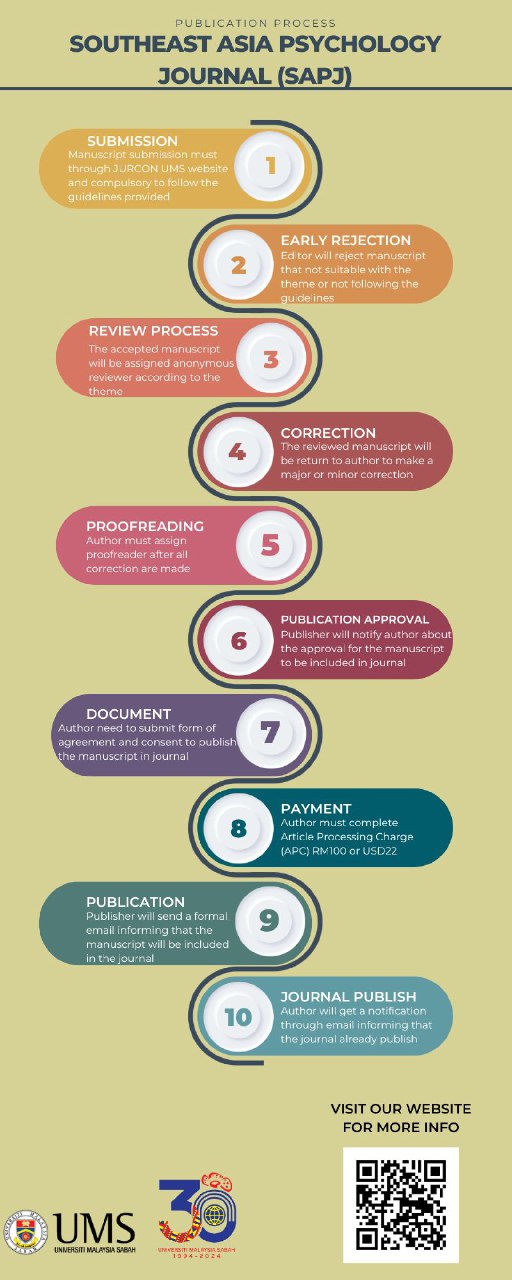SCHOOL CONNECTEDNESS AND ACADEMIC BUOYANCY: INSIGHTS INTO FILIPINO COLLEGE STUDENTS’ EXPERIENCE OF ACADEMIC STRESS
DOI:
https://doi.org/10.51200/sapj.v7i1.5167Keywords:
School Connectedness, Academic Buoyancy & Academic StressAbstract
The primary purpose of this research was to look into college students’ academic stress as regressed from connectedness and academic buoyancy. Participants involved included 186 (male = 61, female = 125) undergraduates from a Philippine university. Hierarchical regression analysis revealed a significant inverse relationship between connectedness and academic stress in model 1 (β = -.277, p < .01). This relationship remained significant in model 2 (β = -.186, p < .01) when academic buoyancy and other demographic variables were added, indicating the value of connectedness in situations that could trigger stress among students. Likewise, academic buoyancy was revealed to be a significant predictor of academic stress (β = -.294, p < .001). Findings suggest the utilization of an endogenous resource and an exogenous resource to cope with stress. Implications of the findings on school outcomes such as learning and motivation, and counseling psychology are discussed.
References
Conway, G.D., Jugarap, E.J.M., Marquez, V.M., Crisostomo, K.A., & Ouano, J.A. (2018). Examining the salience of school connectedness in college students’ academic help-seeking behavior. Philippine Journal of Counseling Psychology, 20(1), 61-80. Philippines: Philippine Association for Counselor Education, Research and Supervision (PACERS).
Datu, J.A.D., King, R.B., & Valdez, J.P.M. (2016). The benefits of socially-oriented happiness: Validation of the interdependent happiness scale in the Philippines. Child Indicators Research, 9(3), 631-649. doi: 10.1007/s12187-015-9333-3
Gustems-Carnicer, J., Calderón, C., & Calderón-Garrido, D. (2019). Stress, coping strategies and academic achievement in teacher
education students. European Journal of Teacher Education, 42(3), 375-390. doi: 10.1080/02619768.2019.1576629
Gyllensten, K., & Palmer, S. (2005). The role of gender in workplace stress: A critical literature review. Health Education Journal,
(3), 271-288.
Heath, J.R., Macfarlane, T.V., & Umar, M.S. (1999). Perceived source of stress in dental students. Behavioural Science, 26(3), 94-100. doi: 10.12968/denu.1999.26.3.94
Hirvonen, R., Yli-Kivistö, L., Putwain, D.W., Ahonen, T., & Kiuru, N. (2019). School-related stress among sixth-grade students: Associations with academic buoyancy and temperament. Learning and Individual Differences, 70, 100-108. doi: 10.1016/j.lindif.2019.01.012
Humphris, G., Blinkhorn, A., Freeman, R., Gorter, R., Hoad-Reddick, Murtomaa, H, Splieth, C. (2002). Psychological stress in undergraduate dental students: Baseline results from seven European dental schools. European Journal of Dental Education, 6(1), 22-29. doi: 10.1034/j.1600- 0579.2002.060105.x
Jdaitawi, M. (2015). Social connectedness, academic, non-academic behaviors related to self-regulation among university students in Saudi Arabia. International Education Studies, 8(2), 84-100. doi: 10.5539/ies.v8n2p84
Jia, Y., Niobe, W., Ling, G., Yoshikawa, H., Chen, X., Hughes, D, Lu, Z. (2009). The influence of student perceptions of school climate on
socio-emotional and academic adjustment: A comparison of Chinese and American adolescents. Child Development, 80(5),
-1530. doi: 10.1111/j.1467-8624.2009.01348.x








